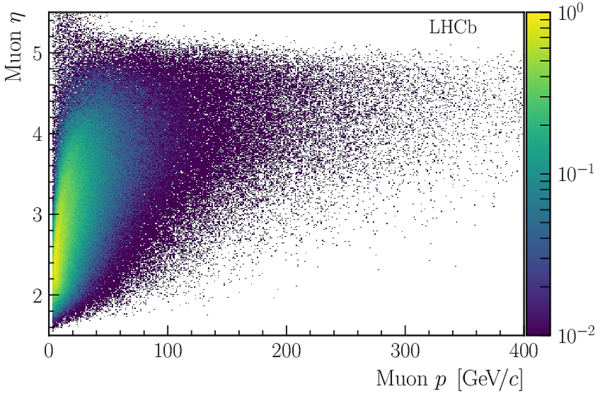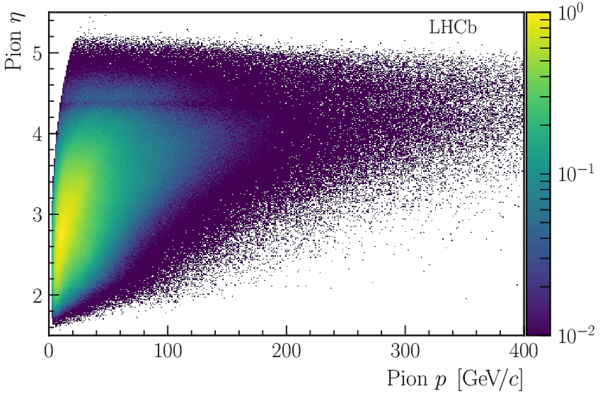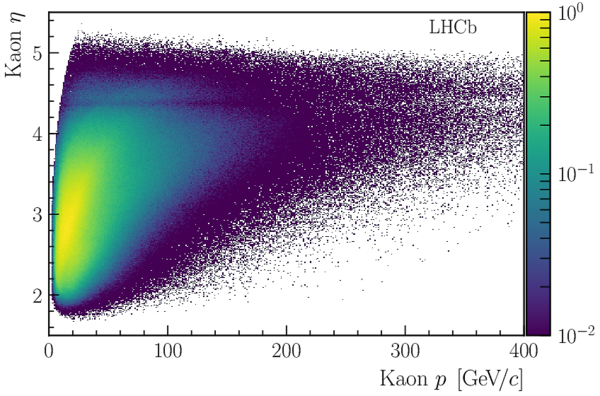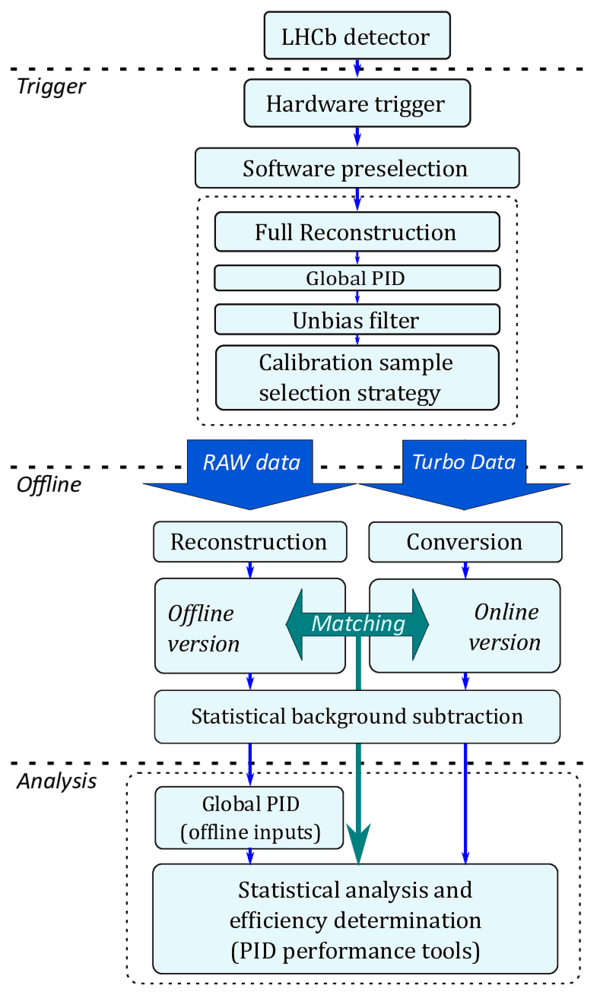Selection and processing of calibration samples to measure the particle identification performance of the LHCb experiment in Run 2
[to restricted-access page]Information
LHCb-DP-2018-001
arXiv:1803.00824 [PDF]
(Submitted on 02 Mar 2018)
EPJ Techniques and Instrumentation 2019 6:1
Inspire 1658455
Tools
Abstract
Since 2015, with the restart of the LHC for its second run of data taking, the LHCb experiment has been empowered with a dedicated computing model to select and analyse calibration samples to measure the performance of the particle identification (PID) detectors and algorithms. The novel technique was developed within the framework of the innovative trigger model of the LHCb experiment, which relies on online event reconstruction for most of the datasets, reserving offline reconstruction to special physics cases. The strategy to select and process the calibration samples, which includes a dedicated data-processing scheme combining online and offline reconstruction, is discussed. The use of the calibration samples to measure the detector PID performance, and the efficiency of PID requirements across a large range of decay channels, is described. Applications of the calibration samples in data-quality monitoring and validation procedures are also detailed.
Figures and captions
Tables and captions
|
Input variables of the ANNPID classifiers for the various subsystems of the LHCb detector. |
Table_1.pdf [44 KiB] HiDef png [189 KiB] Thumbnail [76 KiB] tex code |

|
|
Overview of decay modes that are used to select calibration samples. The high momentum samples are primarily selected, while the low momentum samples are included to maximise the kinematic coverage as much as possible.” |
Table_2.pdf [68 KiB] HiDef png [41 KiB] Thumbnail [19 KiB] tex code |

|
Created on 18 October 2023.














